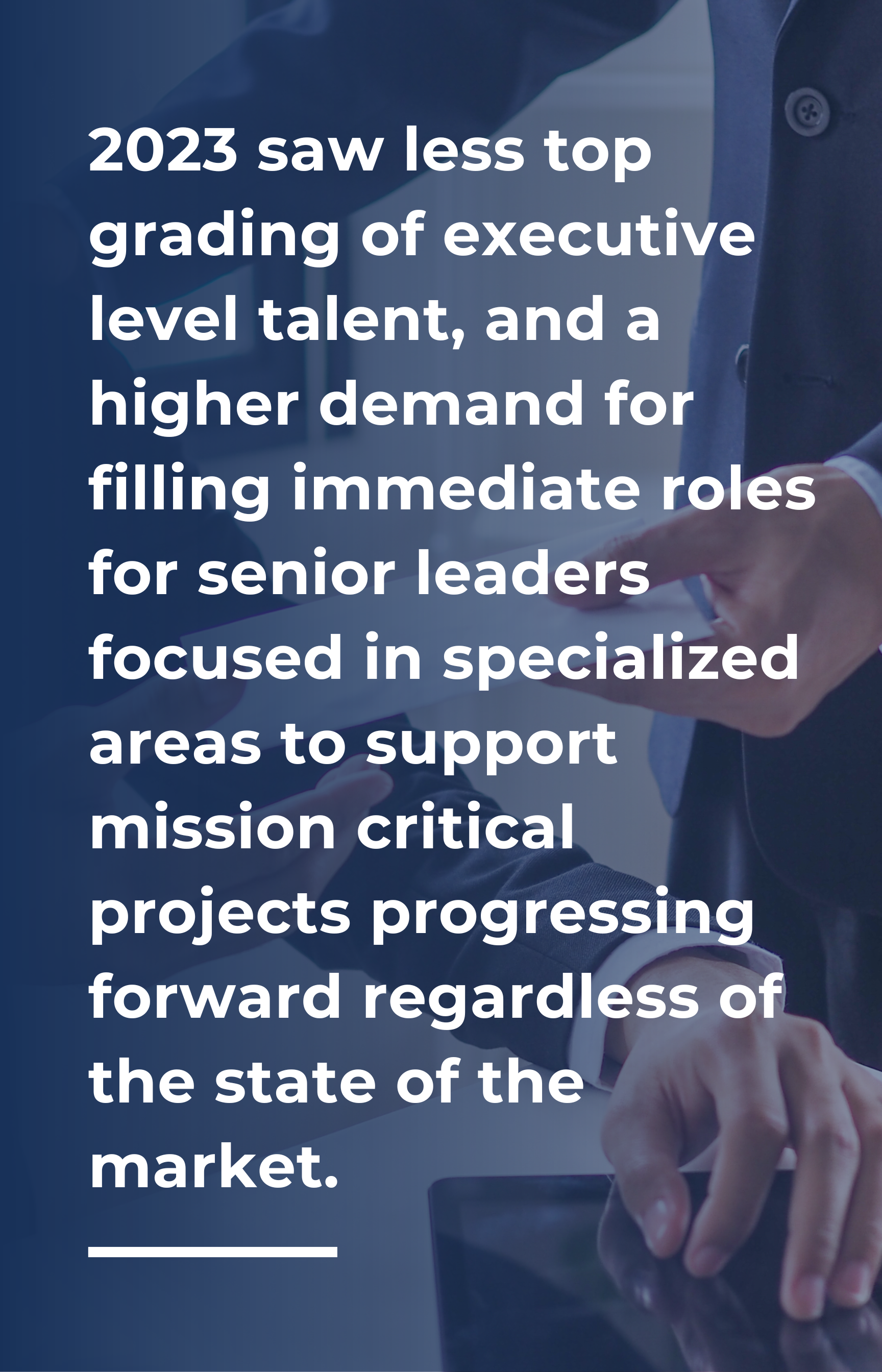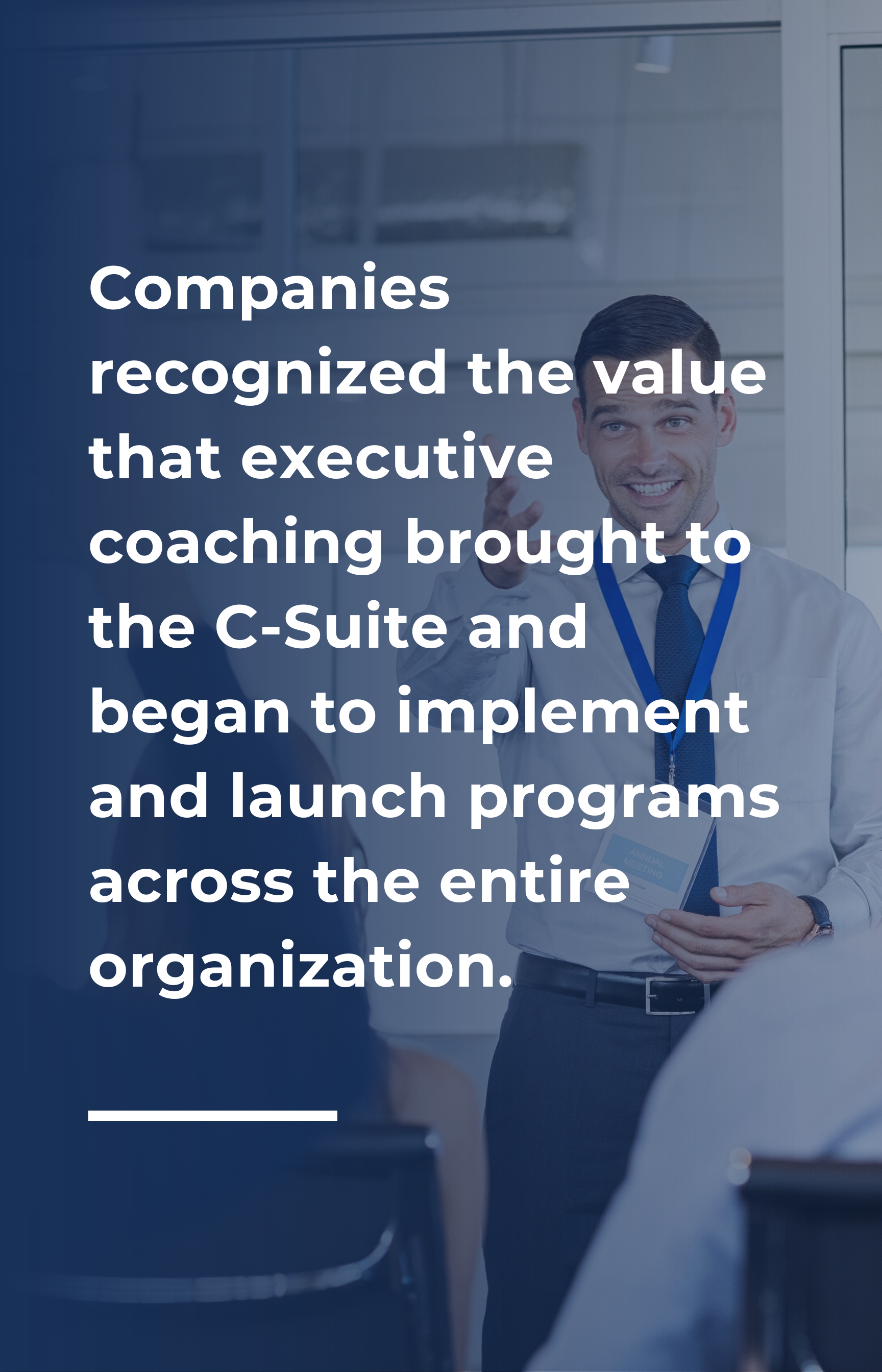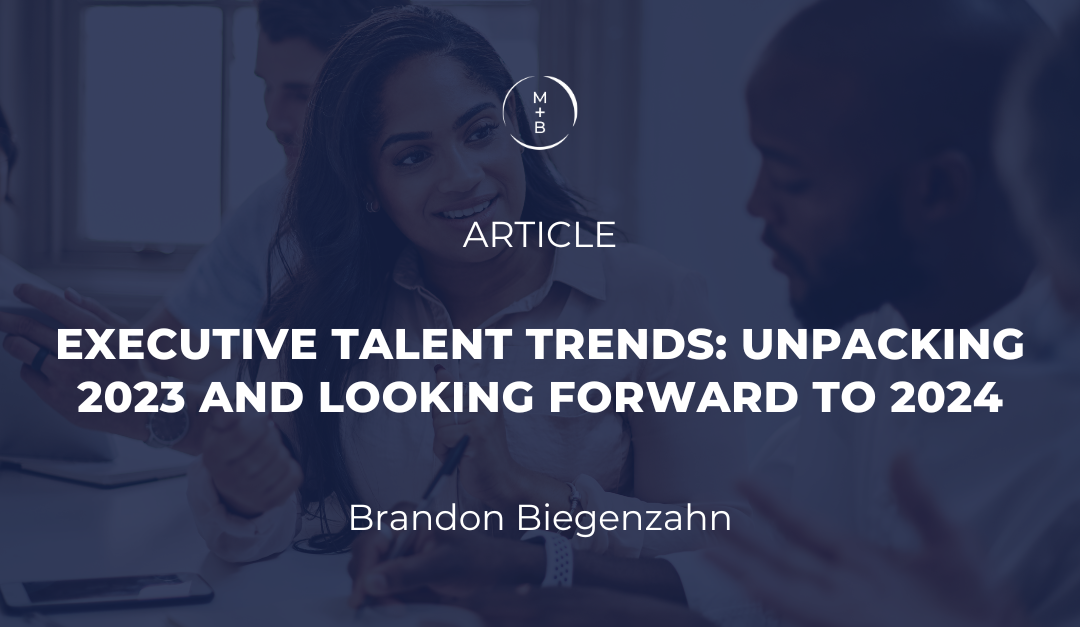As we reflect on the dynamic year of 2023 in the executive talent industry, it’s evident that the landscape was shaped by various economic and demographic shifts. It began with increasing interest rates to combat inflation, leading to what some analysts term a “soft recession.” In addition, the end of 2022 left us beginning to feel the strain of the “talent gap” at the leadership level, as legacy leaders began to retire from the C-Suite. In this article, we will dive deeper into the economic impacts the market had on executive search, talent trends across industries, areas of increased demand, and an outlook for 2024.
Throughout 2023, we observed consistency in executive search volume across various industries. Below are some of the key takeaways from this period.
2023 Key Takeaways in Executive Search:
Retirement drove search activity across the board in Q1 and Q2.
In Q3, companies shifted their focus to developing talent internally.
In Q4, companies spent time planning their executive hiring strategy for making the right executive hire when the time arises in 2024.
Overall demand for interim leaders and fractional talent increased exponentially.
Companies became more strategic and involved in selecting the best possible candidate.
Compensation levels rose compared to previous years.
A Look Back at Executive Talent Trends in 2023
In the first half of this year, several economic events, including the collapse of Silicon Valley Bank and other private lending institutions, rippled through the economy. These events triggered a deeper sentiment of unease and doubt in an already unstable economy across many industries. This overarching disposition was another key driver in search volume in 2023. Despite the uncertainties of 2023, the stock markets continued to perform, leading many baby boomers and legacy leaders to retire comfortably, driving a significant need to fill the vacant leadership roles.
Interest rates rose mid-year making resources, investments, and market capital access more expensive and scarce. As a result, growth hiring came to a standstill for many organizations as new projects and products were placed on hold. 2023 saw less top grading of executive level talent, and a higher demand for filling immediate roles for senior leaders focused in specialized areas to support mission critical projects progressing forward regardless of the state of the market.


Companies paid strict attention to the strategic leadership needs of the business to continue essential projects, growth, and innovation. For example, the life sciences sector saw a lot more momentum in market access, quality, clinical, and R+D roles. Whereas, in financial services, a lot more placements were made in credit, cash management, and treasury roles. Companies smartly invested their human capital and resources in those leaders and executive-level positions that were mission-critical. In more mature industries, like Financial Services, many searches were driven by retirement. Despite some challenges, this year was one of the most consistent for search activity in the last 12 years, especially when comparing to the anomalies of 2021 and 2022. We also saw a shift toward interim leadership as companies still sought to drive innovation and move special projects.
As 2023 progressed, the impact of geopolitical events deepened across many sectors, as many international start-ups and technologies are based in affected areas. These events disrupted industries on a global level, including areas like supply chain, mergers, investments, market access, executive mobility, transitions, and more.
By Q3 and Q4, as uncertainty continued to permeate the economy, many industries and companies shifted their focus from executive hiring to planning and forecasting. This included a focus on developing the right leaders internally, a critical analysis around succession planning, and laying the groundwork so that when the opportunity presents itself in 2024, an executive hiring action plan is ready to enact. Toward the end of 2023, search activity and volume slowly began to pick back up.
A Shift to Strategy + Intentionality
Companies and hiring committees became more astute and involved in the search process. They sought to review a broader pool of candidates than in the past years, with the traditional list of top four finalists expanding to a top seven or 10. This change led to more internal stakeholders in the search process, ensuring the selection of the most suitable candidate for the role. Consequently, there was an increase in secondary candidates where a company would select and hire more than one candidate. This phenomena skyrocketed in 2023 when companies recognized the value of exceptional talent and how choosing one candidate over another could be shortsighted. In some instances, recognizing the unique skill sets of these candidates, companies crafted roles specifically tailored to harness their talents in a way that aligned closely with the original role, yet brought a distinct impact and value to the organization.
Increase in Demand for Interim Leaders
With the overall economic uncertainty and costs rising significantly, interim leadership became an ideal stopgap for impactful roles at many companies. Despite tight cash flows and resources, organizations leaned heavily into leveraging experience, capitalizing on their industry knowledge, depth, and value creation. A large proportion of these interim roles bridged gaps in finance departments at the CFO level with high demand across the industrial, manufacturing, construction, aerospace and defense, and financial services sectors.
“Economic instability led a lot of companies to leverage interim leaders as an immediate solution for bridging leadership gaps,” said Mark McConnell, Senior Managing Director of McDermott + Bull Interim Leaders. “These leaders brought an elevated level of experience and knowledge to their interim roles providing stability and driving results across many functional areas and departments. In 2024, as companies continue to control cost, interim leadership will continue to deliver significant ROI.”

In 2023, interim leaders afforded companies the ability to control cash flow and remain agile with their leadership resources while maintaining momentum on projects, strategic plans, and innovation. In addition to these key areas, interim leaders were in high demand to support companies with:

Accounting, reporting, and compliance
Human resources and organizational development
M&A activity
Technology initiatives
Transformation
Operations and supply chain
Strategic planning and analytics
Compensation
As more and more baby boomers began to retire, it left a widening skill and leadership gap across every sector. As a result, compensation levels increased compared to previous years’ and were driven by fair market compensation. This upward trend in compensation was attributed to salary increases back in 2021 and 2022 when executive mobility was much higher. As a result, in 2023, companies that were competing for an already limited talent pool, found themselves raising compensation and salary levels to align with fair market compensation caused by the Great Resignation and Great Reshuffle. To attract executive leaders, companies moved away from incentives like equity or long-term incentive plans. Instead, fair market value compensation favored more competitive cash compensation schemes including base and target bonuses.
Candidate Mobility
Candidate mobility and behavior were more cautious than in previous years. With uncertainty being the general outlook for companies and the economy, candidates became more risk averse than in the past, which was reminiscent of the Great Reshuffle and Great Resignation. As a result, the tumultuous climate of 2023 led some candidates to withdraw from the search process which spurred companies to develop a more robust and effective talent attraction strategy.
When it came to remote, hybrid, and in-office work in 2023, candidates continued to favor remote roles. However, as companies enforced stricter policies on returning to the office, the availability of fully remote positions declined, while hybrid work arrangements saw an increase.
Coaching + Upskilling
In 2023, we saw an increase in executive and team coaching serving not only as a retention tool but also as an opportunity to develop talent for succession planning. Companies recognized the value that executive coaching brought to the C-Suite and began to implement and launch programs across the entire organization. These initiatives, encompassing coaching, upskilling, and mentorship, significantly boosted employee satisfaction, fostering a more loyal and engaged workforce.
“This year required CEOs to have deeper emotional intelligence (EQ) to understand personal challenges affecting the workplace,” said Jake Vander Zanden, Partner at McDermott + Bull and part of the Technology + Life Science Practice. “Amidst political, economic, and global disruptions, great leaders in 2023 learned to compartmentalize and understand these challenges at both individual and team levels. The need for leaders skilled in crisis management became more pronounced, as 2023 brought numerous unexpected developments, necessitating not just one, but multiple contingency plans to ensure stability and preparedness.”

Looking Ahead to 2024
Economic Outlook
As we navigate through 2024, the economic outlook, while still surrounded by some uncertainty, seems to be stabilizing, echoing the patterns we observed last year. Toward Q2 and Q3, as rates begin to level out and capital flows a little more freely, companies will likely be able to implement and execute their executive hiring strategies that were planned at the end of the previous year. As executive hiring accelerates, we anticipate a corresponding increase in talent demand, leading to greater candidate movement in the market.
Talent Outlook
As for companies and organizations looking ahead, developing and upskilling your internal workforce will continue to be a critical retention tool. As capital becomes less costly and more available mid-way through 2024, that means candidate confidence and mobility will begin to bounce back. Retaining your existing talent and helping them visualize and build an internal career path they can strive for will be an effective way to keep them engaged and committed.
At McDermott + Bull, we’re looking forward to 2024 and the new opportunities that it will bring. Our commitment to excellence, shaped by our Lean Six Sigma processes, results in an agile approach that is constantly engaging new efficiencies as we adapt to the evolving market. We welcome the opportunity to engage in discussions on the topics covered here, offering our expertise across various industries and sectors. We appreciate your support and look forward to a year of collaborative success and growth.
About the Author
Brandon Biegenzahn
President
biegenzahn@mbexec.com
Brandon holds dual roles as President of McDermott + Bull and Chair of the firm’s Financial Services Practice. As President of McDermott + Bull, Brandon leads day-to-day operations for the firm as well as the strategic buildout of the firm’s team of executive search managing directors. As Chair of the firm’s Financial Services Practice Group, he is a partner to an array of financial services firms, including investment banks, commercial banks, private banks, credit unions, asset managers, institutional investors, and fintech companies.


